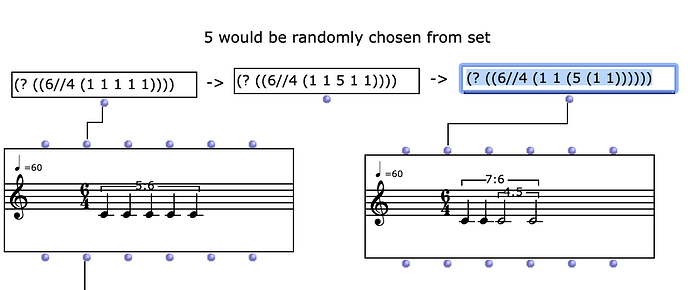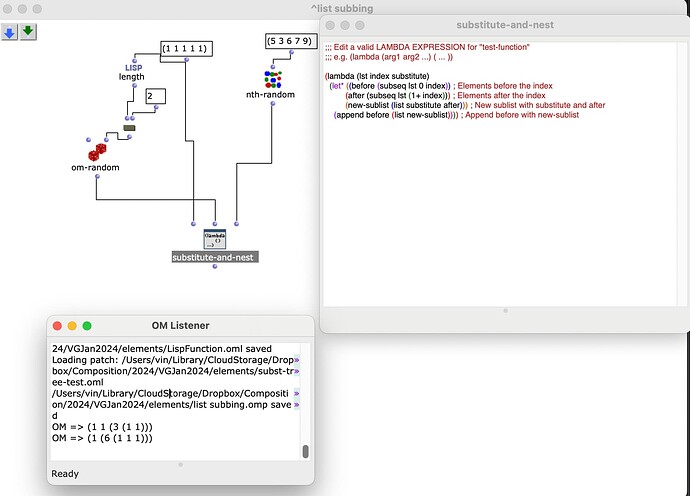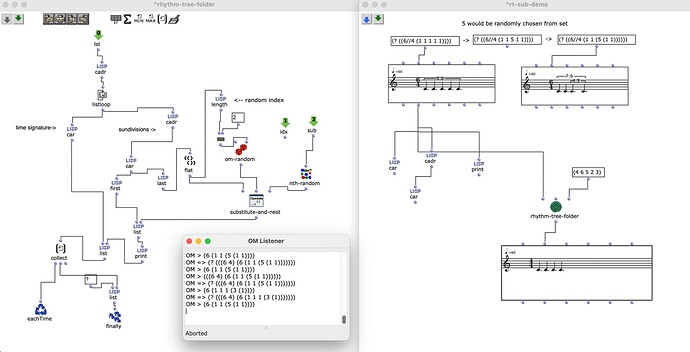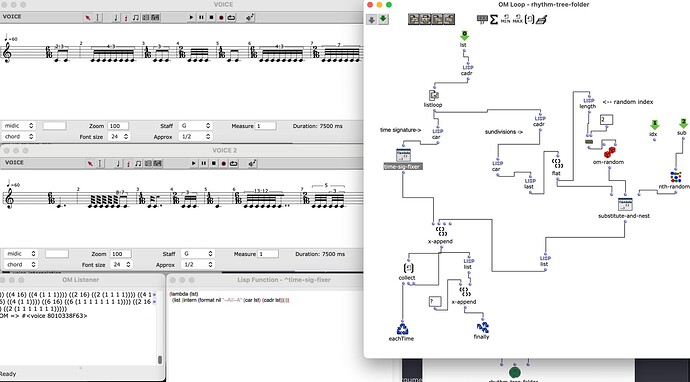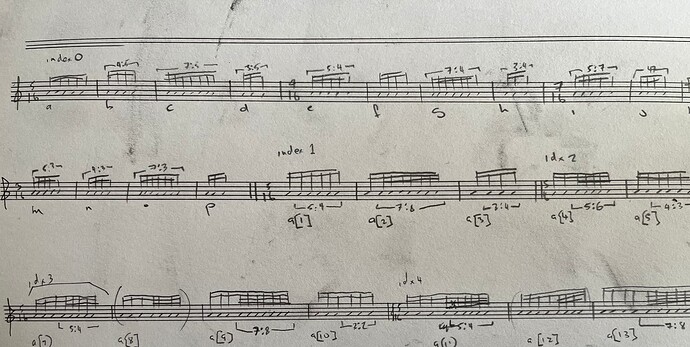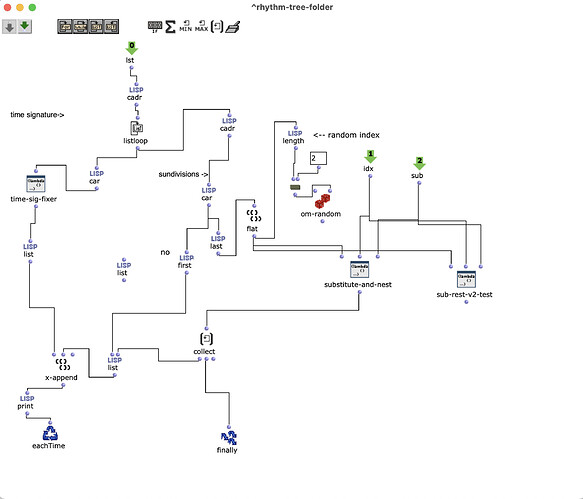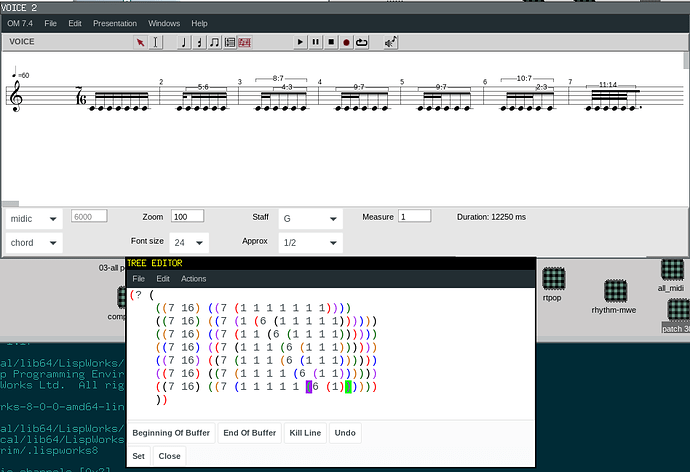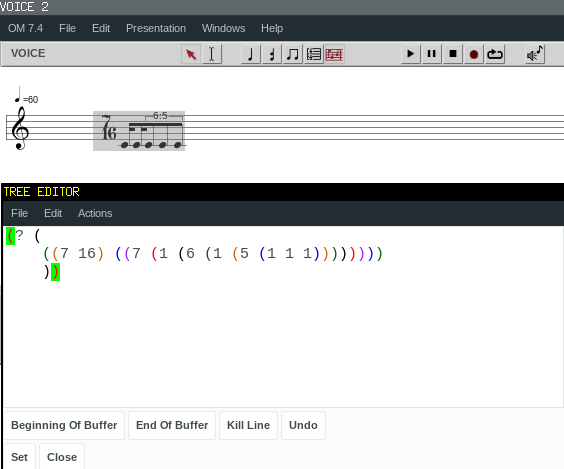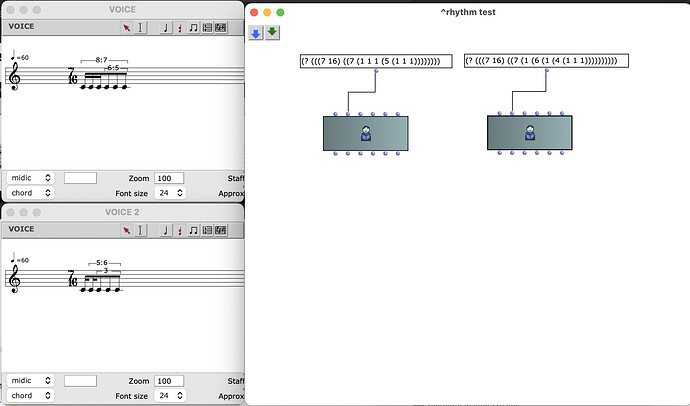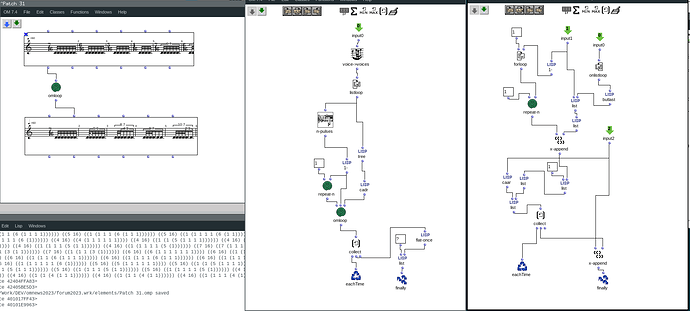Hello!
I’m trying to deepen my understanding (and application) of rhythm trees, but am getting stuck, probably with the conceptualisation of how to systematise the solution.
Desired process (but at much larger scale)
RT-0: (? ((6//4 (1 1 1 1 1))))
Then
Substitute random impulse from a list of duration values, say, the index 2 (impulse 3), but leave the rest of the impulse string in tact, such that:
(? ((6//4 (1 1 5 1 1)))) - this is simple enough, the subst-rhythm function does this. BUT
I want to then have the RT become ‘nested’ within the substitution, such that:
(? ((6//4 (1 1 (5 (1 1)))))) - it is getting to this part that I can’t get my head around. And preferably skipping the intermediary step, I just wanted to show the thinking. I’ve attached my attempt at it, though it’s not “working” (removing one of the list functions will yield the middle result, but randomised).
I did a good search through the forum but couldn’t find anything that dealt with this. Just the ‘accessing sublists’ post, but couldn’t glean a solution from it. So thank you in advance if anybody can point me in the right direction or offer a solution! I do want to be able to do this in larger voice objects at the measure level, but, little steps first!
rt-sub-demo.omp (19.8 KB)

